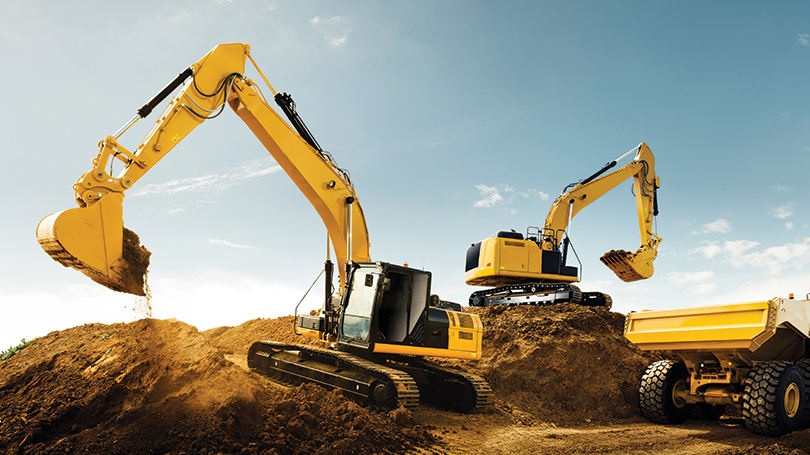According to the Wells Fargo Economist Group, national construction spending gained a bit of momentum in the final month of 2023. Total outlays picked up 0.9% in December, besting expectations for a softer improvement. The monthly rise was largely the result of another strong increase in residential outlays. Despite higher interest rates, a structural shortfall of available homes appears to be boosting new single-family and home improvement project spending. Public sector expenditures was another bright spot, primarily from a robust gain in highway & street spending. Meanwhile, private nonresidential spending pulled back slightly during the
month as the hot pace of manufacturing spending cooled down and commercial and institutional construction weakened.
Moving forward, the promise of lower interest rates and sturdy economic growth should help bolster construction in the year ahead. Residential spending should continue to lift overall spending as mortgage rates continue to move lower. On the other hand, the lagged impact of reduced credit access and higher interest rates has likely yet to be fully realized. A recent downshift in new commercial construction starts and moderating manufacturing spending suggests a weaker pace of nonresidential outlays in coming months.
Residential Remains Rate Resilient
- Total construction spending surprised to the upside and rose 0.9% in December. All told, total construction outlays grew 7.0% in 2023 as a whole, with nonresidential gaining 19.8% and residential declining 5.6%.
- Residential’s drop during 2023 was largely the result of a sharp move-up in mortgage rates. The annual decline overshadows a pick-up in activity more recently. Total residential spending rose a solid 1.4% in December, the third straight improvement
- Single-family outlays, which increased 1.6% during the month, once again boosted overall spending. Despite higher mortgage rates, home builders appear to be scaling up production as buyers increasing turn to the new home market on account of challenging affordability and low inventory in the resale market.
- The shallow pool of available homes also appears to be supporting home improvement spending, which rose 1.7% in December. Higher interest rates and lower housing turnover have taken some wind out of the sails in this category. Yet a structural shortfall of available homes on the market as well as elevated homeowner equity levels continues to drive spending.
- Multifamily spending inched up 0.3% in December, which translates to 11.9% year-over-year gain. Although spending was up solidly in 2023 as a whole, new development appears to be shifting to a lower gear. The apartment market has experienced rising vacancy rates alongside a wave of new supply. Considering the near-record levels of units that are still currently under construction and recent downswing in multifamily starts and permits, spending looks set to pull back further in the months ahead.
Nonresidential Starting to Lose Momentum
- Meanwhile, private nonresidential spending pulled back 0.2% during December. Most of the major categories declined during the month, with notable drops in warehouse and healthcare project spending.
- Private office spending fell 0.2% during the month, which equated to a 3.1% year-over-year gain. Given the deleterious impacts of hybrid work on the office market and sharp downshift in new office starts, the annual gain in spending was likely owed to repair and renovation work as well as data center construction, which the Census includes in the office category.
- Warehouse construction, which had picked up considerably in recent years, looks to be easing as industrial developers adjust to a deluge of new supply and cooling demand. Warehouse outlays have declined 8.4% since peaking last July.
- The hot pace of manufacturing spending cooled down a bit to end 2023, with manufacturing outlays slipping by 0.1% over the month. On balance, the pace of spending has moderated over the past few months, however the build-out of electrical vehicle supply chains and semiconductor plants was a major force behind the almost 71% rise in manufacturing spending last year.
- Public sector expenditures, which grew 16.3% in 2023, have been another stand out. Public spending rose another 1.3% in December, primarily from a robust gain in highway & street spending. Heathy state & local government coffers and ongoing federal funding for infrastructure projects should continue to support overall public outlays, although a more constrained fiscal environment may lead to a slower pace of growth.
Higher Rates, Project Delays Constrain Commercial Pipeline
- Business conditions at architecture firms remained unfavorable in December. The AIA/Deltek Architecture Billings Index was essentially flat at 45.4 in December as a majority of firms reported a decline in billings for the fifth straight month.
- The December ABI survey suggested some stabilization in the value of new design contracts, which were unchanged in December following four straight months of contraction. New inquiries into projects continued to grow over the month, but developers appear hesitant to commit to contracts outright.
- The December survey also shed light on the prevalence of project delays and cancelations, which appear to be increasing. On average, 72% of projects were described as “proceeding as normal,” while 14% were delayed, 10% on hold and 4% canceled. Roughly one third of firms reported a rise in
delayed projects over the last six months, with just 12% reporting a decrease in that same period. Among the reasons for construction delays, half of respondents cited insufficient budgets and high financing costs as key causes. - The softening outlook combined with the recent downshift in new commercial construction starts and moderating manufacturing spending suggests a weaker pace of nonresidential outlays in coming months.









